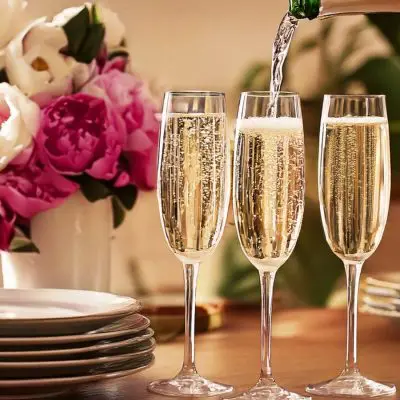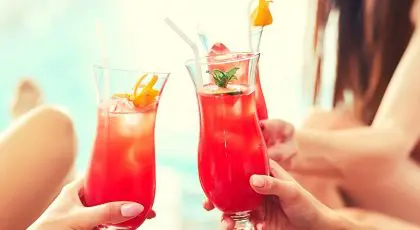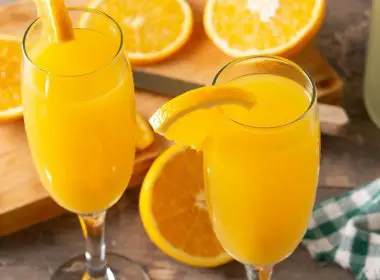Exploring Champagne Varieties: Sweetness, Styles & Grape Blends
Jump to:
Nothing says celebration time quite like Champagne! This bubbly beauty from the Champagne region of France is the ultimate symbol of joy and good times. Whether you’re toasting a big win or just feeling fancy, there’s a type of Champagne to suit every occasion. With its lively sparkle and undeniable elegance, it’s no wonder it’s a favourite for making memories. Ready to find out what makes each type of Champagne so special? Let’s pop the cork!
What defines Champagne?

Not all sparkling wines are Champagne—it’s a common mix-up though. Champagne is sparkling wine, but not all sparkling wines can claim the prestigious title of Champagne. To carry the name, a wine must strictly adhere to a set of rules that safeguard the region’s tradition and reputation.
Champagne vs. sparkling wine
Here’s what sets Champagne apart:
Region of origin: Champagne must come from the Champagne region in northeastern France. Sparkling wines, on the other hand, can be made anywhere—from Prosecco in Italy to Cava in Spain or even sparkling wines from New World countries like South Africa.
Traditional methods: True Champagne is crafted using the méthode champenoise (traditional method), which involves a second fermentation in the bottle to produce its signature fine bubbles. Many sparkling wines use other methods, like the Charmat method, which ferments the wine in tanks instead of individual bottles.
Grape varieties: Champagne uses specific grape varieties, mainly Chardonnay, Pinot Noir, and Pinot Meunier, while sparkling wines can experiment with various grapes depending on the region and style.
Price and prestige: Champagne’s meticulous production process and limited growing area often means its pricier than most sparkling wines. Its reputation as a luxury drink also contributes to its elevated status.
In short, Champagne is the gold standard for sparkling wines, celebrated for its history, craftsmanship, and undeniable sparkle. It’s the drink of choice when only the best will do!
Also see: Our Best Summer Champagne Cocktails
Champagne styles based on grapes

The type of grapes used plays a major role in defining the style and character of Champagne. Here’s a closer look at the most celebrated grape-based styles:
Blanc de Blancs
Blanc de Blancs Champagne is crafted exclusively from Chardonnay grapes, resulting in a light, crisp, and elegant profile. Blanc de Blancs is known for its delicate floral aromas, citrus notes, and a fresh, zesty finish. It’s a favourite for pairing with oysters, light seafood dishes, or as an aperitif for its refined, bright flavours.
Blanc de Noirs
Made solely from Pinot Noir and/or Pinot Meunier grapes, Blanc de Noirs is richer and fuller-bodied than its Blanc de Blancs counterpart. This style often delivers flavours of red berries, apples, and brioche, with a lush texture that makes it perfect for heartier pairings like roasted chicken or creamy cheeses.
Rosé Champagne
Rosé Champagne types bring a fruity, romantic twist to the bubbly scene. It’s produced either by blending red wine into the Champagne or through maceration, where the grape skins are left in contact with the juice during fermentation to extract colour. Expect a lively mix of berry flavours, subtle spice, and a burst of freshness that makes it an excellent choice for celebrations or pairing with desserts like strawberries and cream.
Read next: The 10 Best Champagne Cocktails for Any Occasion
Champagne sweetness levels

When it comes to Champagne, sweetness is all about balance. The level of sweetness is determined by the amount of residual sugar (measured in grams per litre) added during the final stage of production (dosage). This scale not only affects the flavour but also guides pairing options. Let’s break it down:
Brut Nature
Sugar: 0–3 g/L. Bone-dry and intensely crisp, Brut Nature contains no added sugar. This style highlights the raw essence of the grapes and terroir, making it ideal for purists. Pair it with briny oysters or sashimi for a clean, sophisticated match.
Extra Brut
Sugar: 0–6 g/L. With slightly more sweetness than Brut Nature, Extra Brut remains very dry, with sharp acidity and a refined profile. It pairs well with rich canapés like foie gras or creamy cheeses.
Brut
Residual Sugar: 0–12 g/L. The most popular Champagne style, Brut strikes a perfect balance with minimal sweetness. It’s versatile and vibrant, pairing beautifully with seafood, light pastas, and festive hors d’oeuvres.
Extra Dry
Sugar: 12–17 g/L. Despite its name, Extra Dry is sweeter than Brut, offering a softer and slightly fruitier profile. It pairs wonderfully with savoury-sweet dishes like duck with orange glaze or spicy Thai cuisine.
Sec
Sugar: 17–32 g/L. Sec Champagne introduces moderate sweetness, making it a lovely companion for fruit-based desserts like tartes or panna cotta.
Demi-Sec
Sugar: 32–50 g/L. Sweeter still, Demi-Sec is a rich and indulgent style perfect for pairing with cakes, pastries, or creamy desserts.
Doux
Sugar: Over 50 g/L. The sweetest Champagne style, Doux is rare and often reserved for the most decadent pairings, such as chocolate fondue or richly spiced desserts.
How sweetness affects pairing options
The level of sweetness in Champagne isn’t just about taste; it shapes its versatility at the table. Dryer styles (Brut Nature, Extra Brut) shine with savoury and salty dishes, while sweeter styles (Demi-Sec, Doux) elevate desserts and fruit-forward flavours. Whether you’re hosting a dinner party or a casual brunch, there’s a Champagne sweetness to match every moment.
Easy does it: 2-Ingredient Champagne Cocktails to Delight Your Guests
Vintage vs. non-vintage Champagne

Champagne labels often showcase a key detail: whether the bottle is vintage or non-vintage. This distinction isn’t just about the year—it reflects the winemaker’s approach and the Champagne’s character.
Vintage Champagne
Definition: Made from grapes harvested in a single exceptional year, vintage Champagne represents the unique characteristics of that year’s harvest.
Production: Only produced in years deemed extraordinary by winemakers, meaning these bottles are less common and highly prized. Vintage Champagne spends at least three years aging in the bottle (often longer), resulting in complex flavours.
Profile: Expect bold, nuanced notes like honey, nuts, dried fruits, and a toasty richness, making it perfect for savouring on special occasions.
Non-vintage Champagne
Definition: Crafted from a blend of grapes harvested in multiple years, non-vintage Champagne showcases a consistent house style.
Production: By blending different harvests, winemakers ensure reliable quality and flavour year after year. Non-vintage Champagne must age for at least 15 months but is generally fresher and more approachable than vintage bottles.
Profile: Lively and fruit-forward with a bright, crisp character—ideal for everyday celebrations and casual toasts.
When to choose one over the other
Vintage: Choose vintage Champagne for significant milestones, elegant dinners, or when you want a luxurious and layered tasting experience. Its richness pairs beautifully with complex dishes like truffle risotto or aged cheeses.
Non-vintage: Non-vintage is the go-to for spontaneous celebrations, light meals, or gifting. Its approachable style pairs well with everything from sushi to fried snacks.
Deck the halls: 15 of the Best Christmas Prosecco Cocktail Recipes
Special Champagne categories

Champagne comes in many styles, but a few categories stand out for their exclusivity and unique craftsmanship. These special Champagnes represent the artistry and dedication that elevate sparkling wine to an extraordinary experience.
Prestige Cuvées
Prestige cuvées are the pinnacle of Champagne luxury. These high-end bottles are crafted from the finest grapes and meticulously aged to create unparalleled complexity and depth. Iconic names like Dom Pérignon, Cristal, and Krug Grande Cuvée epitomise this category, offering layers of rich flavours such as toasted brioche, roasted nuts, honey, and citrus.
Their silky texture and long finish make them an indulgent choice for life’s most significant celebrations—think weddings, milestone anniversaries, or grand achievements. Prestige cuvées also shine when paired with gourmet dishes like lobster, truffles, or caviar, where their opulence complements fine dining perfectly.
Grower Champagnes
For those who appreciate artisanal charm, grower Champagnes are a delightful discovery. Made by independent grape growers who craft their Champagne from their own vineyards, these bottles offer a deeply personal connection to the land. Often marked with the initials RM (Récoltant-Manipulant) on the label, grower Champagnes showcase the unique terroir of their vineyards.
These range in flavour from fresh and vibrant to bold and earthy, often reflecting the winemaker’s distinctive style. Perfect for dinner parties or food lovers who want something outside the mainstream, grower Champagnes pair beautifully with farm-to-table dishes and seasonal menus, bringing a touch of individuality to every glass.
3, 2, 1! 20 of the Best New Year’s Eve Cocktails (2024)
How to choose the right Champagne

Choosing the perfect Champagne can feel a bit overwhelming with so many options, but it all comes down to understanding labels, pairing tips, and the occasion. Here’s how to make your choice sparkle.
Recognising labels and terminology
Champagne labels hold the key to what’s inside the bottle. Let’s summarise what we’ve learned so far.
Look for terms like Brut Nature, Extra Brut, or Demi-Sec to understand the sweetness level (dryer styles pair well with savoury dishes, while sweeter ones are great with desserts).
If you see Vintage, it’s made from a single exceptional year, while non-vintage blends multiple years for consistency. For a more artisanal experience, consider Grower Champagnes, often marked with RM on the label, showcasing a winemaker’s personal touch.
Tips for pairing Champagne with food
The versatility of Champagne makes it a dream pairing for almost any meal. Here’s a quick guide:
- Dry styles like Brut Nature and Extra Brut are perfect for salty snacks like chips or seafood dishes like oysters and sushi.
- Brut, the most common style, pairs wonderfully with light dishes like roasted chicken, creamy pastas, or even pizza.
- Sweeter styles like Demi-Sec and Doux shine with desserts like fruit tarts, macarons, or chocolate-covered strawberries.
When in doubt, Champagne’s acidity and bubbles make it an excellent palate cleanser for rich and fatty foods.
Choosing based on the occasion
- Celebrations: For big moments like weddings or milestone birthdays, go for a Prestige Cuvée to add an extra layer of luxury.
- Gifts: A classic Non-Vintage Brut is always a safe and versatile choice that suits most tastes.
- Intimate dinners: Impress your guests with a Vintage Champagne or a Grower Champagne—both offer complexity and a story to tell.
Bubble up! 10 Classic Prosecco Cocktails for Festive Celebrations
Storing and serving Champagne
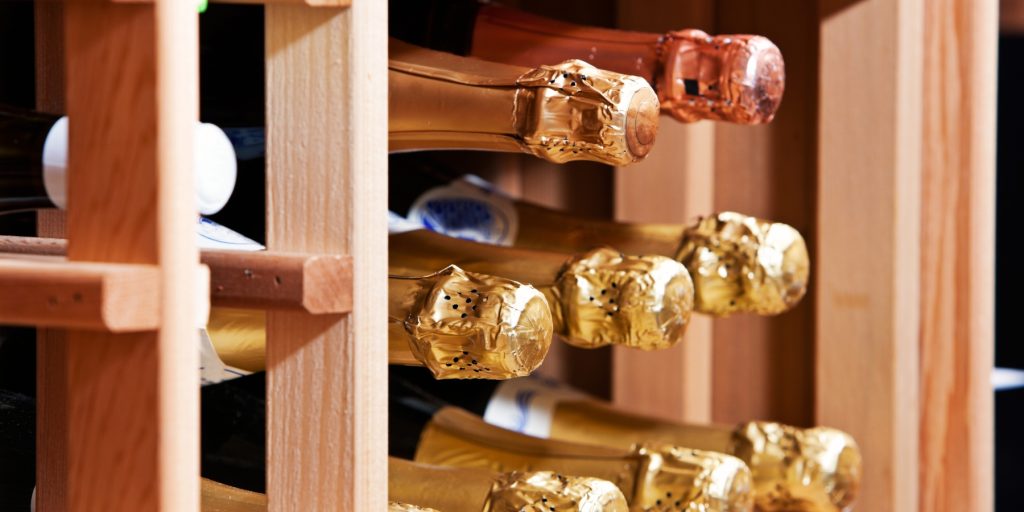
To fully enjoy Champagne’s magic, it’s essential to store and serve it correctly. From storage tips to glassware choices, here’s how to get the most out of every bubbly sip.
Best practices for storage
Champagne is delicate and needs proper care to preserve its sparkle. Store bottles
- Horizontally: This keeps the cork moist, preventing it from drying out and letting air seep in.
- In a cool, dark place: Ideal conditions are around 10–12°C (50–54°F) with consistent humidity and no exposure to light or vibrations.
- Away from strong odors: Corks can absorb scents, so keep your Champagne away from anything with a strong smell, like spices or cleaning products.
If you’re planning to enjoy your Champagne soon, a refrigerator will suffice for short-term storage (1–2 days).
Proper serving temperature and glassware
Serving temperature: Chill Champagne to 7–10°C (45–50°F). Too warm, and the bubbles will feel flat; too cold, and the flavours become muted. To chill quickly, place the bottle in an ice bucket with water and ice for about 20 minutes.
Glassware: The choice between a Champagne flute or a coupe glass can influence your experience. Flutes are excellent for preserving bubbles and showcasing the wine’s effervescence. Coupes, with their wide bowls, are less efficient at keeping the fizz but add a vintage charm to casual celebrations. For the best of both worlds, consider a tulip-shaped glass—it enhances both aroma and bubble retention.
DID YOU KNOW? In 2010, divers discovered a treasure trove of Champagne bottles in a shipwreck off the coast of Finland. These bottles, dated back to the 1840s, were perfectly preserved thanks to the cool, dark, and stable conditions at the bottom of the Baltic Sea. The Champagne was reportedly still drinkable, with notes of caramel and tobacco.
Clink, clink! 17 Irresistible Coupe Glass Cocktails
Best type of Champagne to serve this festive season
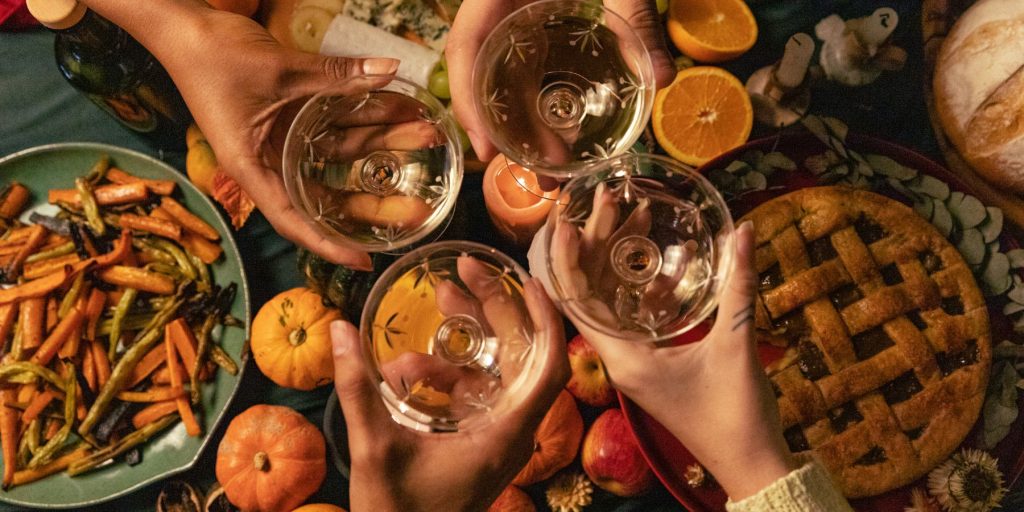
The best Champagne for celebrations? We bet you’re tired of hearing this, but it comes down to what you like. After all, you are the one doing the shopping, popping the corks and filling the glasses, bestie. So do some taste tests, see what pairs well with your menu, and make a call. Trust yourself; a lot of times an intuitive decision is the best one.
If you do want our suggestions on what to add to cart, we can highly recommend the Lallier collection of cuvees for their combination of purity, depth, intensity and freshness and ease of pairing them with food. Their bottles are perfect for toasting big milestones or pairing with an indulgent holiday feast.
Love this article? You’ll adore these…

Ready to keep the good times bubbling? Explore more sparkling ideas with these must-read articles. From elegant French cocktails to floral elderflower blends and timeless Prohibition classics, there’s plenty of inspiration to elevate your next celebration.
Be a Little Extra with These 12 French Cocktails
13 Tasty Elderflower Cocktails You’ll Adore
12 Prohibition Cocktails from the Roaring Twenties
Now you know, sparkle-seekers! May the corks pop ever in your favor. See the Lallier website for more info on amazing Champagne and follow us on Instagram to stay in the know. In the meantime, sign up for your newsletter so we can send you the good stuff hot from The Mixer presses.
